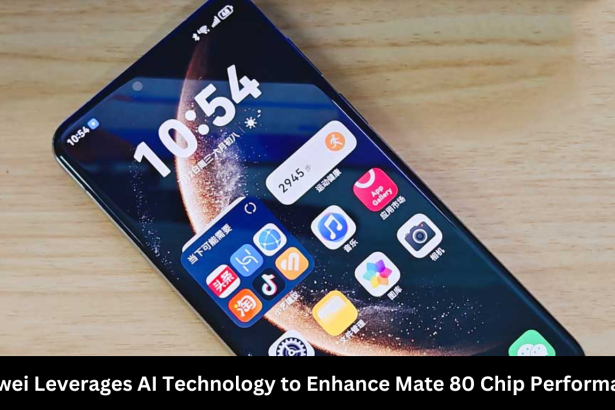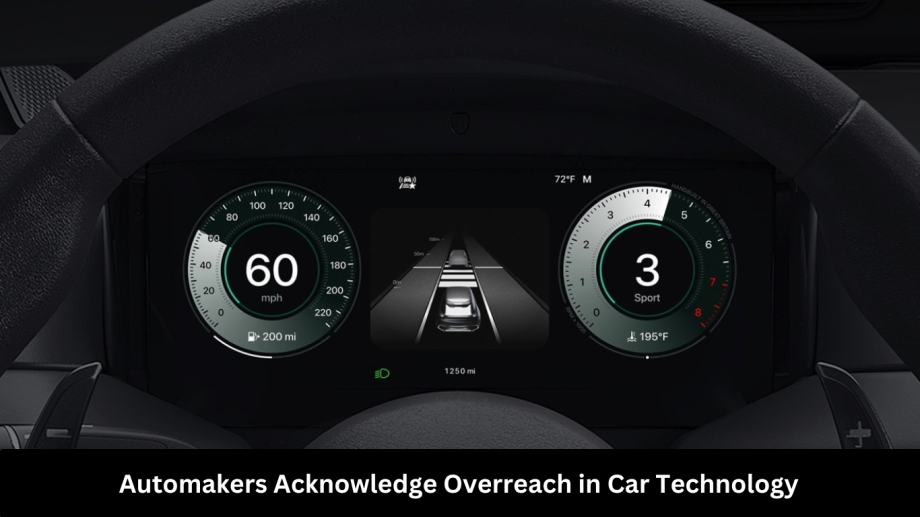In the race to outpace competitors and wow consumers, automakers have increasingly loaded vehicles with cutting-edge technology. From massive touchscreens to automated driver assistance systems, today’s cars often resemble rolling computers more than traditional vehicles.
- The Rise of High-Tech Cars
- Consumer Pushback: Tech Fatigue and Safety Concerns
- What Automakers Are Saying Now
- The Dangers of Overcomplicated Car Tech
- Voice of the Consumer: What Drivers Actually Want
- Regulatory Pressure and Legal Risks
- The Return to Physical Controls
- The Future: Balanced Innovation
- Frequently Asked Question
- Why are automakers admitting they went too far with car technology?
- What are some examples of car tech that drivers find frustrating?
- Which automakers are reversing course on excessive technology?
- How does too much car tech affect driver safety?
- Are physical buttons better than touchscreens in cars?
- What role does consumer feedback play in car tech design?
- What is the future of automotive technology after this shift?
- Conclusion
However, in a growing trend that reflects both consumer fatigue and real-world safety concerns, automakers are beginning to acknowledge that car technology may have gone too far.
This shift in perspective comes as drivers, regulators, and industry insiders raise questions about usability, safety, and the real value of some high-tech features. With recent admissions by major manufacturers and a rethinking of design priorities, it seems the auto industry may finally be ready to course-correct.
More Read: China’s New Tech Visa Draws Interest from India, but Sparks Local Backlash
The Rise of High-Tech Cars
Over the past two decades, automotive technology has undergone a dramatic transformation. Traditional dashboards have been replaced by massive touchscreens.
Buttons and knobs have disappeared in favor of haptic controls and voice-activated systems. Cars can park themselves, stay in their lanes, and even attempt to predict accidents before they happen.
Innovations like:
-
Advanced Driver Assistance Systems (ADAS)
-
Over-the-air software updates
-
Digital instrument clusters
-
In-car apps and streaming services
-
Gesture controls and biometric sensors
have become standard—or at least heavily marketed—in everything from economy sedans to luxury SUVs.
The goal was clear: add convenience, enhance safety, and attract tech-savvy buyers. For a while, it worked. New features gave automakers a competitive edge and helped justify rising vehicle prices.
But now, many are asking: Has the tech gone too far?
Consumer Pushback: Tech Fatigue and Safety Concerns
While flashy features often impress in showrooms, real-world usage paints a different picture.
Consumer Reports, J.D. Power, and other industry analysts have documented increasing dissatisfaction with overly complex infotainment systems, glitchy software, and distracting interfaces.
Common complaints include:
-
Difficult-to-use touchscreens that require drivers to take their eyes off the road
-
Laggy or unreliable voice assistants
-
Too many submenus for basic functions like climate control
-
False alerts from driver-assistance systems
-
Overwhelming learning curves for new owners
In fact, J.D. Power’s 2023 Initial Quality Study found that infotainment systems are now the most problematic area for new vehicles. Over 25% of all problems reported by new car buyers were tech-related.
Moreover, the more advanced the tech, the higher the dissatisfaction. Many buyers are simply not using features like adaptive cruise control, lane-keeping assist, or automatic parking—either because they don’t trust them or find them too confusing.
What Automakers Are Saying Now
In a surprising but welcome turn, several major automakers have begun publicly acknowledging these issues.
BMW’s Shift in Strategy
In 2024, BMW made headlines when it announced it would reintroduce more physical buttons and controls in future models. Frank Weber, BMW’s development chief, admitted:
“We’re seeing that some digital functions are not intuitive enough, and we want to make our vehicles easier to use.”
Volkswagen and Toyota Echo the Sentiment
Volkswagen also announced a pivot away from touch-only controls in its ID electric models. In earlier versions, many essential functions like lights and climate control were buried in touchscreen menus—leading to consumer backlash.
Toyota’s CEO, Koji Sato, noted in a press conference:
“Technology should enhance the driving experience, not complicate it.”
Even Tesla, long known for its minimalist touchscreen design, is reportedly considering adjustments to make controls more user-friendly in future models.
The Dangers of Overcomplicated Car Tech
Technology that interferes with basic driving tasks isn’t just annoying—it can be dangerous.
Distracted Driving Risks
Touchscreens and digital menus require visual and cognitive attention, making drivers take their eyes off the road. A University of Utah study found that using in-car touchscreens can distract drivers for up to 40 seconds—enough time to travel several hundred feet at highway speeds.
False Sense of Security
Advanced driver assistance systems (ADAS), like lane-centering or automatic emergency braking, can give drivers a false sense of security. When these systems fail—or behave unpredictably—drivers may not be prepared to take over in time.
Over-Reliance on Automation
A 2023 report from the Insurance Institute for Highway Safety (IIHS) warned that drivers often overestimate the capabilities of semi-autonomous systems. This can lead to dangerous situations, especially in poor weather or complex driving environments.
Voice of the Consumer: What Drivers Actually Want
Contrary to automakers’ assumptions, most consumers want simplicity and reliability, not overly complex systems or gimmicky features.
According to a 2023 AAA Survey:
-
58% of drivers prefer physical buttons for essential functions
-
62% said in-car tech is too distracting
-
70% admitted they rarely use advanced features after the first month of ownership
Many drivers are also frustrated by mandatory digital interfaces, subscription-based features, and software that can render a feature useless if it crashes.
In forums, reviews, and social media, the message is clear:
“Give us tech that works with us, not against us.”
Regulatory Pressure and Legal Risks
Governments and safety regulators are also starting to take a closer look at the risks posed by complex car technology.
NHTSA Guidelines
The National Highway Traffic Safety Administration (NHTSA) has issued guidelines encouraging automakers to limit driver distraction, particularly from in-car screens. They recommend that infotainment systems should not require more than two seconds of visual attention at a time.
Lawsuits on the Rise
Several automakers have faced lawsuits over malfunctioning safety systems. For example:
-
A class action lawsuit against Tesla claimed the Autopilot system was unsafe and misleading.
-
Toyota and Honda have faced scrutiny over false alerts from ADAS features, causing drivers to panic or make sudden moves.
With increasing scrutiny, automakers can no longer afford to ignore the consequences of overly complex or unreliable technology.
The Return to Physical Controls
As part of the shift toward more user-friendly design, automakers are bringing back tactile, physical controls for essential features.
Why Physical Buttons Matter
-
Muscle memory: Drivers can operate them without looking
-
Faster response time: No lag or unresponsive touch inputs
-
Greater reliability: Especially in cold weather or with gloves
-
Reduced distraction: Eyes stay on the road
Even tech-forward brands like Mercedes-Benz and Audi are now combining touchscreens with strategically placed buttons and rotary knobs.
It’s not about rejecting innovation—it’s about finding the right balance.
The Future: Balanced Innovation
So where does the industry go from here? Automakers aren’t abandoning technology—but they’re learning that smart, user-friendly integration is key.
Emerging Trends:
-
Simplified user interfaces with customizable settings
-
Better voice assistants powered by AI and natural language processing
-
Heads-up displays that project info onto the windshield
-
Smarter driver monitoring systems to detect fatigue and distraction
-
Context-aware controls that adjust based on driving conditions
The next generation of vehicles will likely focus on enhancing driver support rather than replacing the driver entirely.
Frequently Asked Question
Why are automakers admitting they went too far with car technology?
Automakers are acknowledging that some of the advanced tech features added to modern cars have made them overly complicated and less user-friendly. Complaints from consumers about confusing touchscreens, unreliable driver-assistance systems, and tech-induced distractions have prompted companies to reevaluate their approach.
What are some examples of car tech that drivers find frustrating?
Common complaints include touchscreens that replace physical buttons, voice commands that don’t work properly, complicated menu systems for basic controls, and advanced safety features like lane-keeping assist or adaptive cruise control that behave unpredictably or are hard to understand.
Which automakers are reversing course on excessive technology?
Companies like BMW, Volkswagen, Toyota, and even Tesla have publicly acknowledged issues with over-reliance on screens and automation. Several brands have announced plans to reintroduce physical buttons and simplify user interfaces in upcoming models.
How does too much car tech affect driver safety?
Overcomplicated technology can increase driver distraction, especially when essential functions require navigating touchscreens. Some advanced systems may also create a false sense of security, leading to over-reliance on automation and slower driver reaction times in critical situations.
Are physical buttons better than touchscreens in cars?
Yes, many drivers and experts prefer physical buttons for key functions like climate control and audio because they are easier to locate without taking eyes off the road. They offer tactile feedback and don’t suffer from lag or software glitches like touchscreens sometimes do.
What role does consumer feedback play in car tech design?
Consumer feedback has become a major driver in shaping the future of automotive tech. Negative reviews, complaints to regulatory bodies, and survey data (like from J.D. Power or Consumer Reports) are influencing automakers to prioritize usability and safety over gimmicks.
What is the future of automotive technology after this shift?
Going forward, automakers aim to strike a balance between innovation and simplicity. Expect to see smarter, more intuitive tech, better voice controls, hybrid interfaces (buttons + screens), and a renewed focus on driver-first design that enhances safety without overwhelming the user.
Conclusion
The admission by automakers that car technology has sometimes gone too far is a significant and positive shift in the automotive world. It shows a willingness to listen to consumers, prioritize safety, and rethink what “innovation” really means.
In a time when digital convenience often trumps real-world usability, the car industry is learning a valuable lesson: technology should serve the driver—not the other way around.
As the dust settles on the tech arms race, the cars of the future will hopefully be smarter, safer, and simpler—delivering on the promise of innovation without overwhelming the very people they’re designed to serve.








